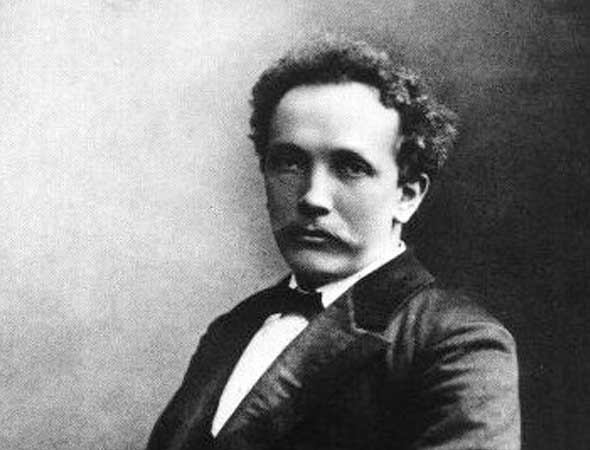R. STRAUSS: Suite from Der Bürger als Edelmann (Le bourgeois gentilhomme)
Don’t worry: This essay will not be followed by a short quiz on the long, twisting road that gave rise to Richard Strauss’s orchestral suite Der Bürger aus Edelmann. We’d never suspect it just from listening, but after almost two decades of false starts, acclaim and scandal, the title Der Bürger als Edelmann was associated with four contrasting musical treatments designed to fit markedly different opera and ballet scenarios. Happily, they came together in a 1920 orchestral version that is sheer delight, without a hint of the confused history that preceded it.
Orchestral music partisans know Richard Strauss mainly as the composer of the brilliant symphonic showpieces he wrote until he was in his forties—pieces such as Also sprach Zarathustra, Till Eulenspiegel and Don Quixote—while opera fans know him as the greatest 20th-century composer of German operas, including Der Rosenkavalier and Die Frau ohne Schatten. Strauss’s two compositional worlds come together in works such as the two orchestral suites based on Der Rosenkavalier and Der Bürger als Edelmann, which began with an unsuccessful opera based on Moliere’s Le Bourgeois Gentilhomme. But the strange tale of Bürger’s composition starts even earlier, and it tells us much about Strauss’s place in classical music.

Richard Strauss
Born at the end of Western classical music’s Romantic era, Strauss had a long, productive life (1864 – 1949). In his twenties, he established himself as a dazzling musical technician with superb keyboard technique. His mastery of complex, inventive harmonies gave hope to listeners in the post-Brahmsian, post-Wagnerian world that there were still musical frontiers to explore without abandoning tonality altogether, as the Second Viennese School was doing under the leadership of Arnold Schoenberg and Alban Berg.
Strauss established his early reputation as a composer with lushly entertaining, highly programmatic tone poems. It’s possible to surmise the plot points that underlie various musical passages in each, and to hear the innate theatricality that would lead Strauss to write more than two dozen operas. His entry to the ranks of major opera composers came in 1905 with his opera Salome, based on a German translation of Oscar Wilde’s play. As if the play’s lurid treatment of sexual obsession, necrophilia and incest weren’t enough, the music was heard to be even more shocking: cacophonous and atonal. (It’s far from either.)
Salome made Strauss notorious, rich, and internationally famous; more importantly, it established his position among the intellectuals of his era (in this case Wilde and a young, obscure physician named Sigmund Freud, whose ideas permeate Salome). For his 1909 opera Elektra, which is even more Freudian and more shocking, Strauss began an artistic alliance with one of the greatest German-language writers of the day, Hugo von Hoffmansthal. It is this remarkable partnership that led to Der Bürger als Edelmann.
To many listeners, Strauss had gone from traditional composer to modernist rebel. But for his own artistic reasons—and not by way of public “apology”—he had long been nurturing the idea of writing a lighter work in the manner of Mozart’s The Marriage of Figaro. As their work on it continued, Strauss and Hoffmansthal found the opera taking on ever-greater significance and artistic heft. The result, the 1911 masterpiece Der Rosenkavalier, was like an irresistible valentine to old Vienna and to the public that felt Strauss had abandoned them. All was forgiven.
Inspired by the success of Der Rosenkavalier, and by their continuing interest in the themes of bourgeois pretentiousness and aristocratic snobbery, Strauss and Hoffmansthal created the 1912 version of the opera Ariadne auf Naxos, a reshuffled and redealt version of Moliere’s Le Bourgeois Gentilhomme. Like Rosenkavalier, Ariadne escalated during development; by the time it reached the stage, it required full complements of singers, ballet dancers and stage actors. There were plenty of opportunities for things to go wrong, and according to contemporary the premiere production, plenty did. To initial audiences, Ariadne seemed interminable, and to producers it seemed impractical except as a festival work.
Undaunted, Strauss and Hoffmansthal reconceived a pared-down version with a markedly different plotline that opera-lovers everywhere know as Ariadne auf Naxos—a strange, delicious brew combining burlesque and sublime elements. This Ariadne has been in the standard opera repertory since its premiere in 1916. But its creators were not yet done with Moliere, whose original story, a comedy of manners complete with mistaken identities and lovers disguised as foreign visitors, was lost along the way. Hoffmansthal persuaded Strauss to produce still another version the following year: the 1917 version of Der Bürger als Edelmann. This simpler, three-act musical comedy with dance hews closer to the plot of Le Bourgeois Gentilhomme, combining some of the music from their 1912 collaboration with additional material.
The 1912 version was unenthusiastically received. But even after three full-blown attempts, Hoffmansthal had not satisfied his hankering for a musical adaptation of Le Bourgeois Gentilhomme, and tried to persuade Strauss to adapt the 1917 version of Der Bürger as an opera. And though Strauss demurred, Hoffmansthal’s request led to Strauss’s distillation of the popular Der Bürger aus Edelmann orchestral suite, which is not only cherished in the concert hall, but as a ballet score. The other versions, too, live on: Ariadne auf Naxos in the opera house, and the full 1917 version, which Strauss regarded so highly that he chose it as the culminating work for his 85th birthday celebrations. As for the original, 1912 version of Ariadne—mounting a successful staging of that ambitious creation is the stuff of producers’ dreams.












